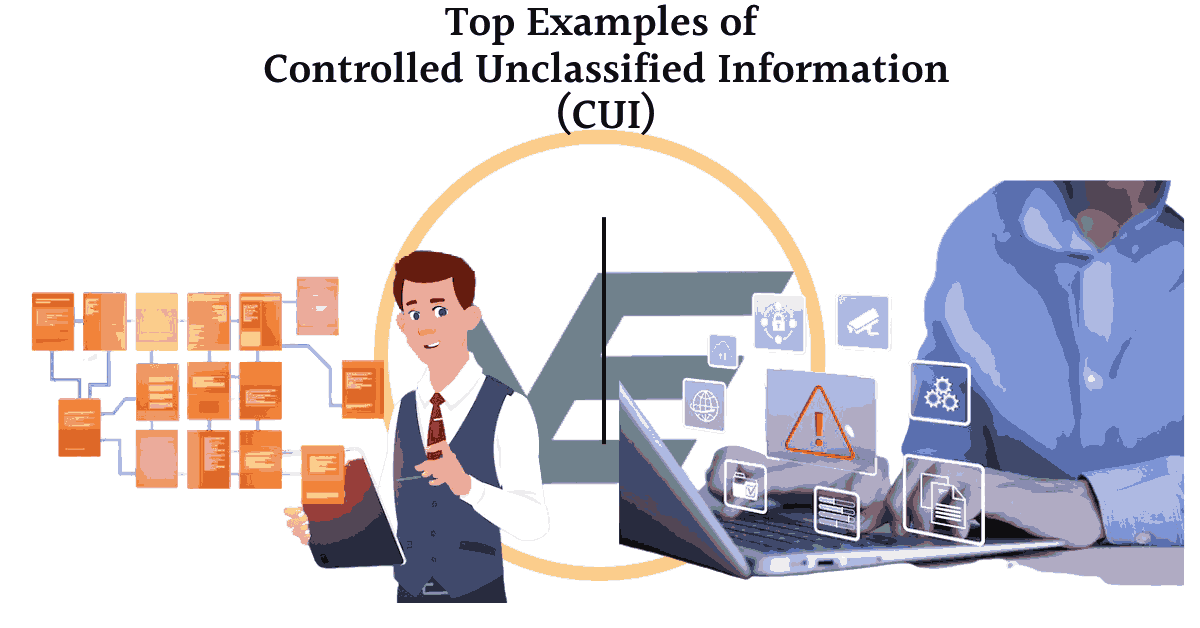Have you ever heard the term “Controlled Unclassified Information” and questioned what it means? It sounds complicated, but it is an important idea for lots companies, mainly those working with the U.S. Authorities. Information is a treasured asset, and defending it is important. This is where the CUI application comes in. It offers a unified system for protecting sensitive government records that is not categorized. Within this system, a key class is known as CUI Basic, and many people ask what is CUI Basic when learning about federal information security. If you’ve been asking yourself what is CUI Basic and why it matters, let’s break down its meaning, topics, and impact on organizations.
What is Controlled Unclassified Information?
Before diving into CUI Basic, we want to understand the broader category it belongs to. Controlled Unclassified Information, or CUI, is unclassified records that require safeguarding or dissemination controls consistent with laws, policies, or authorities, huge rules. Think of it as a stage of protection between public information and classified secrets and techniques. This information isn’t always a national safety secret, but its unauthorized disclosure should cause damage. The National Archives and Records Administration (NARA) manages the CUI program, making sure absolutely everyone follows the identical guidelines.
The Two Main Types of CUI
The CUI program divides records into two main categories—CUI Basic and CUI Specified—to clarify exactly how Controlled Unclassified Information should be treated. Understanding what is CUI Basic is the first step before diving into the more advanced CUI Specified category.Understanding the difference is step one toward proper compliance, and this starts by clearly defining what is CUI Basic compared to CUI Specified.
What is CUI Basic Explained Clearly
So, what is CUI Basic? It is the default sort of CUI and represents the baseline level of security for sensitive but unclassified information. It represents the baseline degree of safety required for touchy statistics. The handling and protection requirements for CUI Basic are uniform throughout the federal government. The key steerage for protecting it comes from a file referred to as NIST SP 800-171. If facts are identified as CUI, however, they would not have any greater, precise handling necessities; they fall into the Basic class. This streamlines protection measures, making it simpler for groups to implement security controls while also clarifying what is CUI Basic in practice.
CUI Specified Explained
In evaluation, CUI Specified is a subset of CUI that requires extra stringent controls than the baseline. This is because a selected regulation, law, or government-wide policy demands an exclusive or more restrictive method for dealing with it. For example, information associated with export control might have unique rules regarding who can get access to it, which highlights the importance of knowing what is CUI Basic versus stricter categories. Failure to properly protect information once you know what is CUI Basic can lead to severe consequences, including loss of government contracts and potential legal penalties. These greater requirements are distinct within the CUI Registry managed by NARA.
Why Does CUI Basic Matter?

Protecting CUI Basic isn’t always simply a suggestion; it is a requirement for any employer that handles this type of information on behalf of the federal authorities. This includes many protection subcontractors, research institutions, and providers. Failure to properly shield these statistics can result in serious outcomes, including the loss of presidential contracts and felony consequences. Proper coping ensures that sensitive records, along with Controlled Technical Information or Proprietary Business Information, do not fall into the wrong hands—another reason why organizations must understand what is CUI Basic. This facilitates saving you from cyber espionage and protects national interests.
The Role of NIST SP 800-171
The number one framework for defensive CUI Basic is the National Institute of Standards and Technology Special Publication 800-171, often called NIST SP 800-171. This report outlines 110 security controls that organizations ought to enforce to protect CUI on their non-federal information systems. These controls cowl a extensive range of protection regions, from get right of entry to control to physical safety. Adhering to NIST SP 800-171 is vital for proving that your organization has the proper controls to safeguard CUI Basic information.
The Connection to CMMC
If you figure within the defense enterprise, you’re probably familiar with the Cybersecurity Maturity Model Certification (CMMC). CMMC builds upon the muse of NIST SP 800-171. For groups handling CUI, achieving at least CMMC Level 2 is generally required. This stage of CMMC validates that a contractor has successfully implemented all required security controls to protect CUI Basic data in compliance with federal standards. It involves an assessment to affirm that your safety practices meet the specified requirements, ensuring a steady environment for sensitive defense group statistics.
How to Identify and Handle CUI Basic

Properly identifying and dealing with CUI Basic is an important operational assignment. It starts off with understanding what constitutes CUI inside your organisation and ends with the steady use of security protocols.
Marking Your Documents
One of the most visible factors of the CUI program is marking. When you mark CUI, you are absolutely indicating that the records are touchy and call for protection. For CUI Basic, the marking is easy. Documents containing these statistics should have a banner on the top and bottom of every web page that says “CUI”. This simple CUI marking signals absolutely everyone who handles the file of its sensitive nature. The particular regulations for marking are laid out in 32 CFR Part 2002 and further specified in the NARA CUI Registry.
Implementing Security Controls
Beyond marking, you ought to implement the desired protection controls. This includes creating a comprehensive safety plan for your complete device.
Developing a System Security Plan
A System Security Plan (SSP) is a living document that provides information on how your employer implements the safety controls from NIST SP 800-171. It describes your network architecture, the security rules you have in place, and the way you control the whole lot from consumer access to incident reaction. Your SSP is a roadmap to your cybersecurity efforts and a key file at some stage in any government audit or CMMC assessment.
You can also read about protocolo operacional padrao
Ensuring Physical Security
Protecting CUI Basic is not just about cybersecurity. Physical security is likewise a primary aspect. This approach controls access to centers, workstations, and garage media in which CUI is stored. You must make sure that physical items containing CUI, such as printed files or tough drives, are well secured. Physical security for CUI Basic records could involve locked offices, secure storage cabinets, and visitor access logs.
Digital Protection Measures
On the digital front, organizations that want to comply with what is CUI Basic requirements must follow significant controls. They encompass the use of robust passwords, implementing multi-factor authentication, and making sure quit-to-stop encryption for data in transit. Regular safety schooling for employees is likewise important, as human mistakes are usually a vulnerable link within the security chain.
Your IT group or a safety partner like RSI Security can assist in enforcing the necessary technical specs and configurations to protect your network from threats. Operations Security, or OPSEC, standards also play a role in preventing adversaries from accumulating sensitive facts about your activities.
Real-World Examples That Explain What Is CUI Basic

To better understand what is CUI Basic, it helps to look at some real-world examples from the CUI Registry. The DOD CUI Registry and the broader NARA CUI Registry list several classes of records. Many of these fall below the Basic category by default until specified otherwise.
Proprietary Postal Information
To better recognize what CUI Basic allows, it allows checking a few real-world examples. The DOD CUI Registry and the broader NARA CUI Registry list numerous facts. Many of those fall beneath the Basic class by default till special otherwise.
Financial and Contractual Data
Certain monetary facts, like Financial Supervision Information (FHFA HPI) or facts from the Comptroller General (COMPT), can be CUI Basic. Similarly, Ocean Common Carrier Service Contracts (SERV) and Marine Terminal Operator Agreements could contain sensitive business data that falls into this category. The information is not labeled, but its launch could harm business pastimes.
Internal and Procedural Information
Some Internal Data used by government organizations is probably distinct as CUI Basic. This ensures that operational info isn’t publicly uncovered. Information associated with Export Controlled Research at a university, if not now ruled by using stricter export management legal guidelines, may additionally start as CUI Basic, requiring safety under NIST SP 800-171. Even Student Records or Terrorist Screening records, while handled by using a federal contractor, might want to be covered as CUI. A CITI webinar or training materials for federal personnel would possibly discuss those classes in detail.
you can also read about managed object browser
Your Path to Compliance
Achieving compliance with CUI Basic requirements is an adventure, not a vacation spot. It begins with a clear understanding of what information you take care of and the guidelines that apply. For any protection subcontractor or enterprise in the Homeland security sphere, this is not non-obligatory.
First, perceive all of the CUI inside your structures. Review your contracts and consult the CUI Registry. Once identified, create your System Security Plan and a plan of action to deal with any gaps in your modern-day safety posture. This method involves your technical groups, like the KE Research Technology Office at a college, in addition to management.
Working with professionals could make the method a good deal smoother. They will let you interpret the necessities of NIST SP 800-171, put together for a CMMC Level 2 evaluation, and ensure your bodily and digital security measures are up to par. Remember, defensive Controlled Unclassified Information is a shared obligation that is vital for our national and monetary safety. By knowledge CUI Basic, you are taking the first critical step in fulfilling that obligation.
